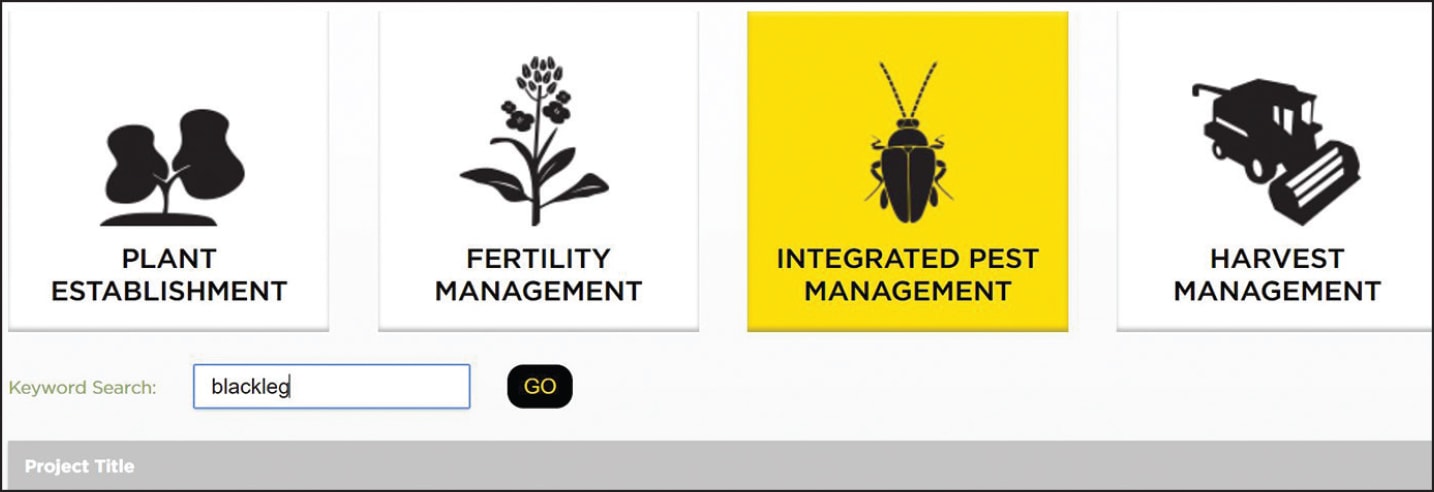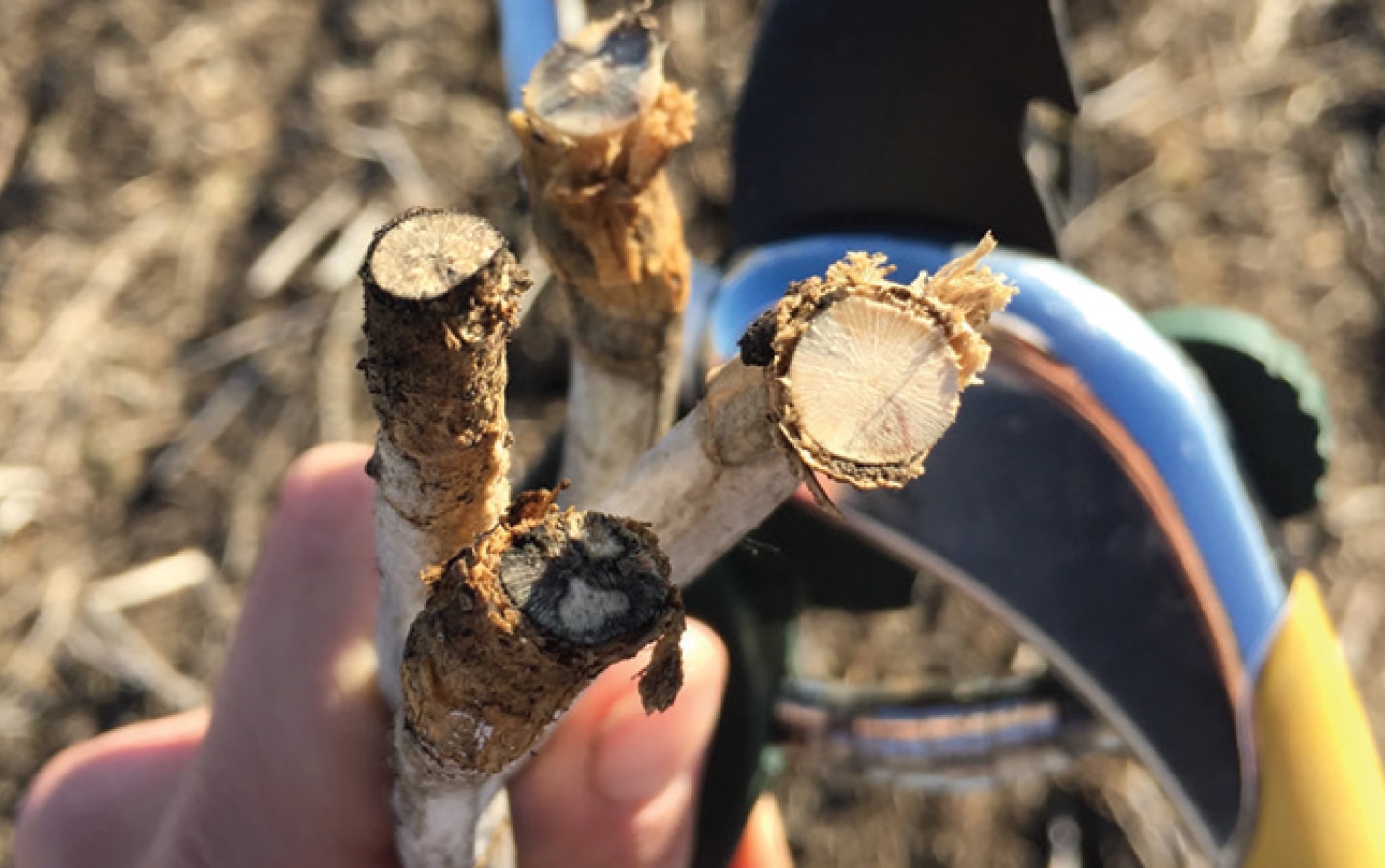Study shows the value of quantitative blackleg resistance
Backleg is a complex disease that impacts canola farmers across Western Canada. Not only is the incidence (number of plants that have it) important, but also the severity (which can be rated on a scale of 0-5). The new two-part blackleg labels reveal that there are two kinds of resistance: major gene (qualitative) and minor gene (quantitative) resistance. Gary Peng, a research scientist with Agriculture and Agri-Food Canada in Saskatoon, studies both of these in a recently completed project, ‘Understanding the mechanisms for race-specific and non-specific resistance for effective use of cultivar resistance against blackleg of canola in Western Canada.’
Key result:
Results from this project are now featured on both the Canola Research Hub at canolaresearch.ca and in the 2019 Canola Digest: Science Edition.
Quantitative (minor gene) resistance to blackleg can work to reduce disease severity even when the major resistance gene (qualitative resistance) is no longer effective. The mechanism for quantitative resistance, at least in the one variety tested, is possibly through programmed cell death and reactive oxygen species to cut off the growth of Leptosphaeria maculans, the blackleg disease-causing fungus.
A summary of three important findings, includes:
- Quantitative resistance is valuable in alleviating blackleg impact on canola without the direct involvement of major R genes. Quantitative resistance limits the spread of fungal hyphae in infected cotyledons further into stems (reducing the blackleg incidence) and/or the infection in stem tissues after the pathogen enters it (reducing the disease severity).
- These resistance mechanisms are different from the single major R gene studied (Rlm1), which induced localized reactions in response to blackleg infection (by L. maculans carrying AvrLm1) that halt the infection immediately. This is the first time that molecular mechanism with a specific blackleg resistance gene (Rlm1) has been identified!
- Common canola cultivars with quantitative resistance can perform effectively under high-temperature conditions during heatwaves, which show that quantitative resistance traits can be stable under a wide range of field temperatures.
Funding support for this Peng study came from Alberta Canola, Manitoba Canola Growers, SaskCanola, and Agriculture and Agri-Food Canada through the Canola Agronomic Research Program and the AgriScience Project.
Want to use the Hub to learn more about blackleg? Just select the IPM icon and type in ‘blackleg’ into the keyword search, before clicking on the ‘Go’ button and you will find many other interesting projects – both completed and ongoing – many of which have been funded in part by Alberta Canola, SaskCanola or Manitoba Canola Growers and/or administered by the Canola Council of Canada. Happy learning!
To search the Hub at canolaresearch.ca, click the theme, enter the keyword and click “Go.”






